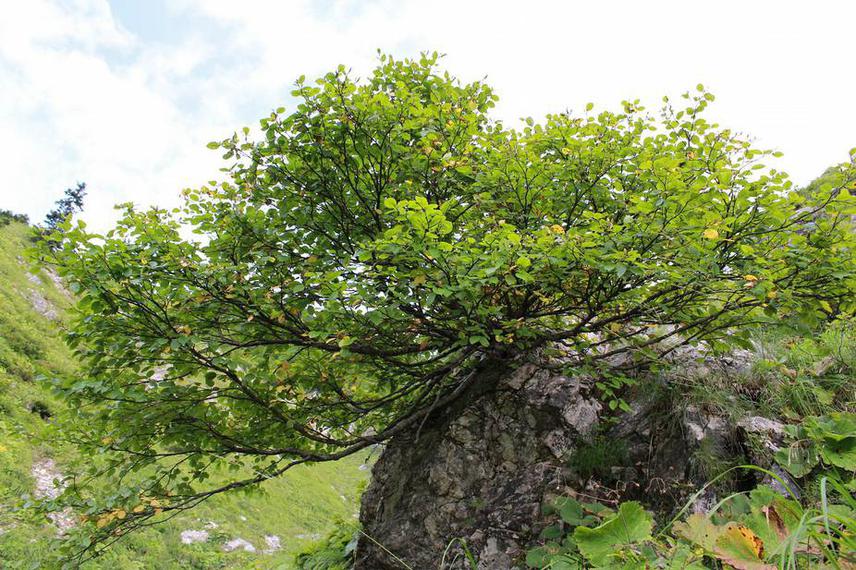Paul Richard Bartlett
Other projects
21 Mar 2017
Collaborative Action to Save Wild Populations of Betula megrelica and it's Habitat - An Endangered, Alpine Tree in the Western Caucasus
This project will contribute to the protection of habitat and biodiversity in the Caucasus mountains by implementing a strategic set of collaborative actions to conserve the wild populations of Betula megrelica.

Fine specimen of Betula megrelica on the north face of Mt Migaria.
The origin of this application is the project I undertook in 2013 with the support of a Rufford Small Grant. The purpose of the 2013 project was to locate and study the rare Caucasian birch Betula megrelica. This project was completed successfully and my final report has been filed.
The 2013 project highlighted the urgent need to protect this species and its habitat and identify the full extent of the wild populations. My report of the 2013 project was an important component of the recently revised Red List of Betulaceae (by BGCI) which evaluates this species as Endangered.
It was identified that the main threat to Betula megrelica comes from commercial human activities and any future conservation measures would have to address this conflict. Growing numbers of domesticated livestock that feed on plants especially on less steeply angled slopes, increasingly expose the species to damage by browsing. There are concerns that clearing of forests in areas at lower elevation and subsequent introduction of livestock may further enhance the grazing pressure on B. megrelica. Collection of firewood represents another factor negatively impacting on the vitality of the species. Our project will achieve the following outcomes:
1. Identifying all sites containing wild populations of Betula megrelica in the Samegrelo district of Georgia. Mapping their scope and providing important evidence about the populations at that time;
2. Identifying and recording site-specific threats to the populations;
3. Molecular analysis of wild populations, providing data to help in our understanding of the variation and evolution of this relict species;
4. Propagation of wild collected seed and creation of important conservation collections at botanic gardens in Georgia and the UK;
5. Creation of an action plan for site-specific conservation, backed up by support from international resources;
6. A working partnership with the local communities. Communicating with local community to better understand their needs. Education of local community (particularly schools) about importance of biodiversity and habitat;
7. Building of good international relations between the organisations involved;
8. Creation of a model for good practice for future integrated conservation projects.
By achieving the outcomes above, we will have given the wild populations of Betula megrelica and their habitat a better chance of survival. We will also have protected the genetic material by establishing conservation collections, enabling future re-stocking in the wild if necessary.